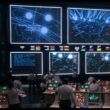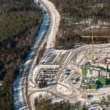Better to control than eliminate?
By Charles Piani, February 14, 2013
My colleagues, in their first-round essays, described quite different experiences of converting research reactors, or attempting to convert them, to low-enriched uranium (LEU) from highly enriched uranium (HEU). Pablo Cristini's account of conversion in Argentina is representative of a situation in which a developing country possesses the independent ability to convert a reactor to LEU: Local expertise is sufficient to carry out the project, and the nation's government offers adequate support. Alexandr Vurim's essay on conversion in Kazakhstan presents a situation in which a nuclear facility is willing to undergo conversion but restrictions of a national or international nature may prevent it from doing so. Obstacles such as those faced in Kazakhstan can be very difficult to surmount unless decision makers become convinced of conversion's benefits.
South Africa's experience with conversion to LEU at its SAFARI-1 research reactor is more similar to the Argentine than the Kazakh situation. In South Africa, as in Argentina, it was possible to address all technical issues on a local level, and South African conversion efforts benefitted from strong governmental cooperation in the legal and regulatory realms. Financial circumstances in the two countries, however, appear to have been quite different.
To begin with, South Africa's exports of molybdenum 99 are significantly larger than Argentina's, so commercial considerations played a very large role in South Africa's deliberations. Also, though the nation's energy department provided significant funding for conversion, South Africa also welcomed US assistance in research and development. This came in the form of evaluating local processes for manufacturing LEU products and providing suggestions for improvement, as well as in performing theoretical computations regarding fuel and target plate efficiencies. (This help was provided by, for example, Argonne National Laboratory.)
There is, however, a continuing problem. SAFARI-1 completed its conversion to LEU fuel in 2009 and LEU targets in 2010, but regulatory authorities have not yet authorized the South African Nuclear Energy Corporation's HEU fuel and target manufacturing facilities to begin producing LEU versions. Thus, the nuclear energy corporation currently must import LEU plates for targets and for fuel and control rod assemblies. This represents a commercially undesirable loss of self-sufficiency.
Not so convincing. As I discussed in my first essay, research reactors in the developing world face a complex set of considerations when deciding whether to convert to LEU, and facilities at which HEU fuel and targets remain available will in some cases continue to delay conversion, unless very strong international persuasion is brought to bear. Reactors can be offered help in exporting radioisotopes, and decision makers understand this sort of commercial incentive readily enough. But less convincing at times are the nonproliferation arguments that developed countries employ in favor of conversion. This is especially true when converting a reactor would be very difficult. An example (admittedly not in the developing world) is Germany's Forschungsreaktor Munchen-II. There, conversion appears impossible unless difficult technical issues involving fuel density can be overcome. When obstacles of this sort complicate reactor conversions, surely it becomes appropriate to take into consideration the security systems that a nation employs for its nuclear material, rather than attempting to force conversion in all cases. Also, a question that I posed in my first essay is relevant here: Why can't the cut-off between low-enriched and highly enriched uranium be increased to something greater than 20 percent uranium 235? In my view, an enrichment level of 30 percent would be quite safe from a nonproliferation perspective.
Additional questions present themselves. What constitutes effective HEU minimization to begin with? How much HEU, in the possession of a particular country or facility, is considered unacceptable? How is that question answered when the fuel is fresh, and how is it answered when the fuel is spent?
And wouldn't developed countries contribute more to nonproliferation by focusing their efforts and funding on adequately controlling highly enriched uranium — whether at their own facilities or at more risk-prone facilities in the developing world — than by attempting to eliminate all uranium enriched above a particular threshold?
Topics: Nuclear Energy, Nuclear Weapons
Share: [addthis tool="addthis_inline_share_toolbox"]














